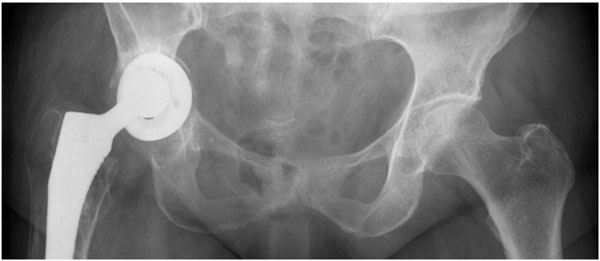CASE VIGNETTE – AUGUST 2020
Bad Luck or Negligence?
Pedro was a 73 year old immigrant who had previously been quite active. He played tennis, walked regularly and also rode his bike.

He recalled injuring his right hip joint whilst playing tennis a few weeks prior to his first presentation to his local medical officer. The doctor was perplexed but made arrangements for an MRI scan examination and sent Pedro off to see an Orthopaedic Surgeon.

The surgeon did see some degenerative changes on the MRI scan, but considered that a non-operative approach would be appropriate.
Pedro re-presented six months later and according to his account, the pain was really much the same. The surgeon however recommended a total hip replacement. Pedro claims that he trusted the doctor implicitly and it was for that reason that he proceeded.
Unfortunately, some technical errors occurred during the course of the hip replacement and in addition, Pedro suffered with a late septic complication.

I was asked for an opinion concerning two factors.
The first factor was whether or not the hip replacement was really indicated. This is a difficult circumstance to assess in hindsight. It is really best judged by those present at the time. It is noteworthy that the Orthopaedic Surgeon had seen him on two occasions, six months apart, and on the first occasion, recommended a non-operative approach. The plane radiographs and the MRI scan examination did demonstrate quite severe disease and Pedro was obviously in his seventies. On balance, it is more probable than not that the recommendation to proceed towards a hip replacement was reasonable.
The second issue related to the technical errors that occurred during the course of the hip replacement and whether they were related to the sepsis.

There was no link between the technical errors and the sepsis. Unfortunately, septic complications occur in just under 1% of hip replacements and despite the best of endeavours, there is little more that we can do. On perusing the notations, it was obvious that the Orthopaedic Surgeon had taken every recognised precaution in an effort to prevent the septic outcome.
The technical errors were relatively minor. The test to be applied is whether or not the performance on the part of the surgeon was equivalent to, or better than, what would be expected of an average Orthopaedic Surgeon in Australia today.
Again, on the balance of probabilities, his performance was satisfactory.
Ultimately, this has been a very unfortunate outcome for Pedro. He is now far worse off than he had been and in retrospect, would have been better avoiding surgical intervention.

I suppose you have all heard that saying “Hindsight is better than foresight by a damned sight”.
